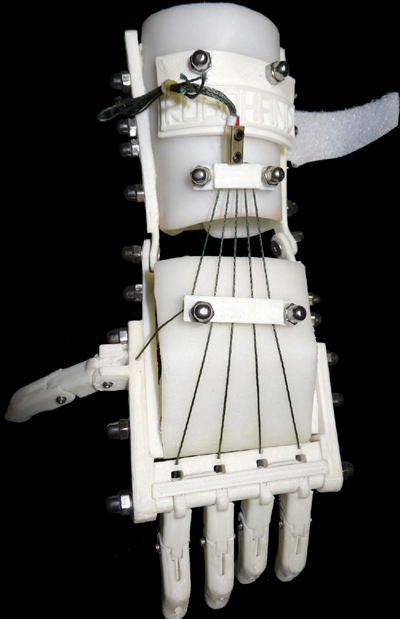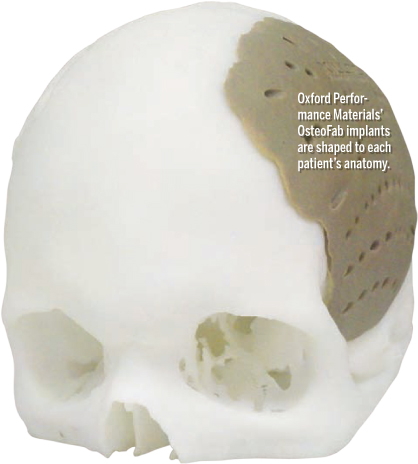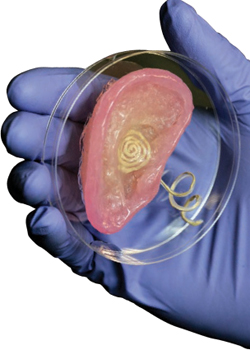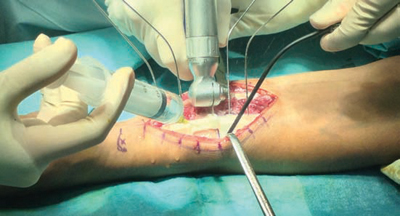LIFE-CHANGING 3D PRINTS

Robohand
After cutting off four fingers in a woodworking accident, Richard Van As saw a need for affordable mechanical prosthetic hands. Using two donated MakerBots, he and 3D designer Ivan Owen came up with Robohand, a custom appendage for kids missing fingers. Best of all, the designs are open source and available on Thingiverse — when outgrown, simply reprint. robohand.net

Kaiba’s Tracheal Splint
Doctors from the University of Michigan 3D printed a tracheal splint to stabilize baby Kaiba’s underdeveloped air passageway. The bioplastic implant will be absorbed into the body as Kaiba’s airways strengthen. makezine.com/go/trachealsplint
Scaffolds to Grow Joint Cartilage
Researchers from the University of Wollongong and St. Vincent’s Hospital Melbourne are developing 3D-printed scaffolding to help regrow cartilage to treat osteoarthritis and traumatic injuries. makezine.com/go/cartilage

Organ Models
Jewelry and design company M.C. Ginsberg partnered with doctors at the University of Iowa to print models of patient organs before surgeries. Based on CT scans, surgeons can use the anatomically accurate models to plan parts of surgery before walking into the operating room. makezine.com/go/3dprintedorgans

Bones
From metal vertebrae and cranial plates to replacement jawbones and even teeth, 3D-printed bone replacements are in the process of becoming bespoke alternatives to other biomedical implants. makezine.com/go/skullplate Oxford Performance Materials’ OsteoFab implants are shaped to each patient’s anatomy.

Skin Cells for Burn Victims
Researchers at Wake Forest University hacked an inkjet printer to lay down living cells on top of burn wounds. After scanning the wound, the experimental printer deposits two different kinds of cells from hacked ink cartridges, which form the dermis and epidermis layers of new skin. makezine.com/go/3dprintedskin

Bionic Ear
Princeton researchers used live cells, silicone, and silver nanoparticles to develop a proof of concept bionic ear that can detect frequencies beyond human hearing — even radio waves! princeton.edu/~mcm

Surgical Guides
Doctors used Materialise’s Mimics Innovation software to 3D print surgical guides to more precisely operate on a man’s broken arm. Printed from a CT scan, the guides directed cutting and drilling points and reduced time in the operating room. makezine.com/go/surgicalguide

